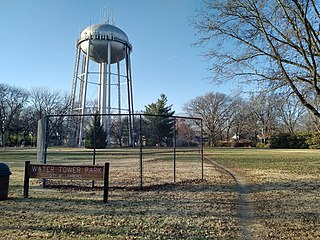Coordinates: 38°57′33″N95°14′33″W / 38.9591°N 95.2426°W

A geographic coordinate system is a coordinate system that enables every location on Earth to be specified by a set of numbers, letters or symbols. The coordinates are often chosen such that one of the numbers represents a vertical position and two or three of the numbers represent a horizontal position; alternatively, a geographic position may be expressed in a combined three-dimensional Cartesian vector. A common choice of coordinates is latitude, longitude and elevation. To specify a location on a plane requires a map projection.
| Fort Lane, Kansas | |
|---|---|
| Mount Oread, Lawrence, Kansas | |
| Type | local militia fort |
| Site information | |
| Controlled by | Lawrence residents from 1856 to 1864; U.S. Army 1864 to 1865 |
| Site history | |
| Built | 1856 |
| In use | 1856 - April 1865 or later |
| Materials | limestone |
Fort Lane, on the crest of Mount Oread, then southwest of Lawrence, Kansas, was built by the residents of Lawrence in 1856 to serve as a lookout post to observe groups of men desiring to attack Lawrence. Lawrence was a free-state community built by northerners. From 1854 to 1861, when Kansas became a state, at times the area around Lawrence was a battleground for settlers who had come from both the northern and southern states. From this location, one could see for many miles in all directions.

Kansas is a U.S. state in the Midwestern United States. Its capital is Topeka and its largest city is Wichita, with its most populated county being Johnson County. Kansas is bordered by Nebraska on the north; Missouri on the east; Oklahoma on the south; and Colorado on the west. Kansas is named after the Kansa Native American tribe, which inhabited the area. The tribe's name is often said to mean "people of the (south) wind" although this was probably not the term's original meaning. For thousands of years, what is now Kansas was home to numerous and diverse Native American tribes. Tribes in the eastern part of the state generally lived in villages along the river valleys. Tribes in the western part of the state were semi-nomadic and hunted large herds of bison.
In 1859 John Ingalls described the fort, writing, "[It is] a rough, irregular structure of . . . lime stone, four feet high, with embrasures for cannon on three sides." The structure did not have a roof. Lieut. Col. Pierre St. George Cooke referred to the fort as a "small fort of rough dry wall." [1]
During the Civil War the fort on Mount Oread was intermittently used as a lookout post. Ironically, it was not used when William C. Quantrill approached Lawrence Aug. 21, 1863, when he raided the town and killed 150 to 180 of its residents. By February 1864 the U.S. Army established a post and a fort on Mount Oread and Fort Lane was incorporated into the new system. After the Army abandoned the Mount Oread Civil War posts, Fort Lane stood many years until the University of Kansas campus encroached upon it, resulting in its demise. [2]

The American Civil War was a war fought in the United States from 1861 to 1865, between the North and the South. The Civil War is the most studied and written about episode in U.S. history. Primarily as a result of the long-standing controversy over the enslavement of black people, war broke out in April 1861 when secessionist forces attacked Fort Sumter in South Carolina shortly after Abraham Lincoln had been inaugurated as the President of the United States. The loyalists of the Union in the North proclaimed support for the Constitution. They faced secessionists of the Confederate States in the South, who advocated for states' rights to uphold slavery.

Lawrence, Kansas was not well defended in the early part of the Civil War. That ended with William Quantrill's devastating guerrilla raid August 21, 1863. By early 1864 Union soldiers were permanently camped on the top and slopes of Mount Oread, then to Lawrence's southwest. It seems the camp was originally named Camp Ewing, after Brig. Gen. Thomas Ewing.

The University of Kansas, also referred to as KU, is a public research university with its main campus in Lawrence, Kansas, and several satellite campuses, research and educational centers, medical centers, and classes across the state of Kansas. Two branch campuses are in the Kansas City metropolitan area on the Kansas side: the university's medical school and hospital in Kansas City, the Edwards Campus in Overland Park, and a hospital and research center in the state's capital of Topeka. There are also educational and research sites in Garden City, Hays, Leavenworth, Parsons, and Topeka, and branches of the medical school in Salina and Wichita. The university is one of the 62 members of the Association of American Universities.








